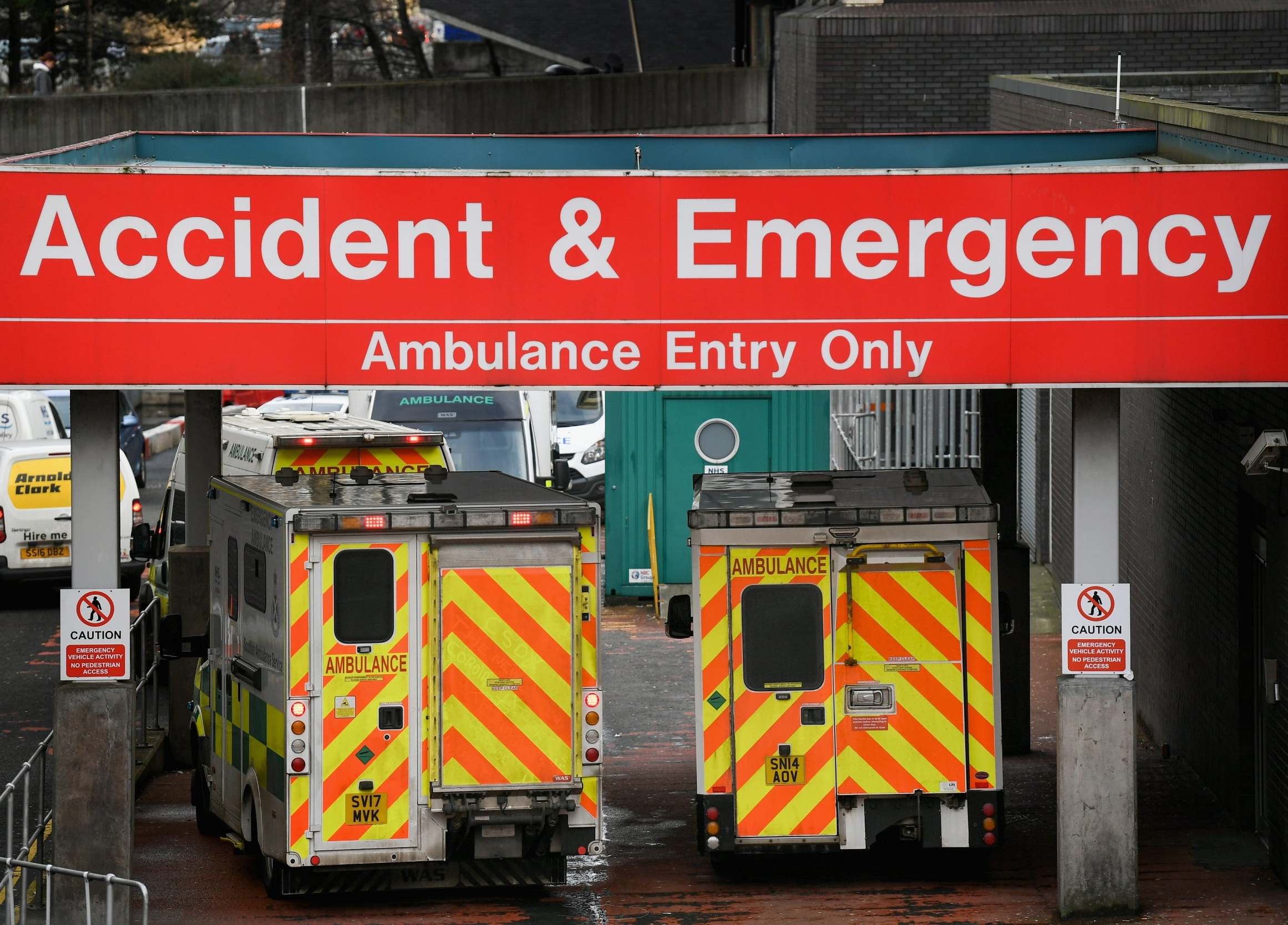Treating A&E patients in hospital corridors becoming ‘norm’, nurses warn
Emergency departments under 'intolerable' pressure, Royal College of Nursing says

Your support helps us to tell the story
From reproductive rights to climate change to Big Tech, The Independent is on the ground when the story is developing. Whether it's investigating the financials of Elon Musk's pro-Trump PAC or producing our latest documentary, 'The A Word', which shines a light on the American women fighting for reproductive rights, we know how important it is to parse out the facts from the messaging.
At such a critical moment in US history, we need reporters on the ground. Your donation allows us to keep sending journalists to speak to both sides of the story.
The Independent is trusted by Americans across the entire political spectrum. And unlike many other quality news outlets, we choose not to lock Americans out of our reporting and analysis with paywalls. We believe quality journalism should be available to everyone, paid for by those who can afford it.
Your support makes all the difference.Treating A&E patients in corridors is becoming “the norm”, leading nurses have warned.
The Royal College of Nursing (RCN) said accident and emergency departments are being put under “intolerable pressure” after a poll of A&E nurses found almost three quarters (73 per cent) provide care to patients in a non-designated area – such as a corridor - on a daily basis.
Nine in 10 said safety was being compromised as a result.
The survey of more than 1,100 RCN members working in emergency care in England also found that the term “corridor nursing” is formally used in the workplaces of 49 per cent of those polled.
And 90 per cent added that the frequency of caring for patients in non-clinical areas has increased since last winter.
The RCN said treating patients in corridors could put extra strain on patients, and nurses could face difficulty performing tasks such as administering urgent intravenous antibiotics.
Mike Adams, the RCN’s director for England, said: “This survey shows that having to deliver care in crowded corridors is becoming increasingly the norm for NHS nursing staff.
“Highly complex procedures such as insertion of intravenous lines and medication should not have to be carried out in conditions like these, while it is completely unacceptable that patients’ privacy and dignity are being undermined by lack of access to toilet facilities while they’re stuck in corridors.
“The reasons for the increased pressure on A&E departments are many and well-known – too few staff, not enough beds to admit patients to, and a lack of social care affecting hospitals’ ability to discharge patients quickly enough.
“But as a result, nurses in emergency departments are being put under intolerable pressure to keep patients safe.”
Labour’s shadow health secretary Jonathan Ashworth said: “These are shocking findings revealing the scale of pressure nurses are working under after years of austerity and bed cuts in the NHS.”
Professor Stephen Powis, NHS England’s national medical director, said: “This self-selecting survey does not give a reliable representation of nurses’ views, but it is correct to say that while the NHS has more beds open this winter than last, our A&Es have had to treat more than a million extra patients over the past year.
“So as well as 50,000 more nurses and extra hospital beds, over the next few years it’s also going to be necessary to rebuild and expand most A&E departments across England.”
PA
Subscribe to Independent Premium to bookmark this article
Want to bookmark your favourite articles and stories to read or reference later? Start your Independent Premium subscription today.
Join our commenting forum
Join thought-provoking conversations, follow other Independent readers and see their replies
Comments